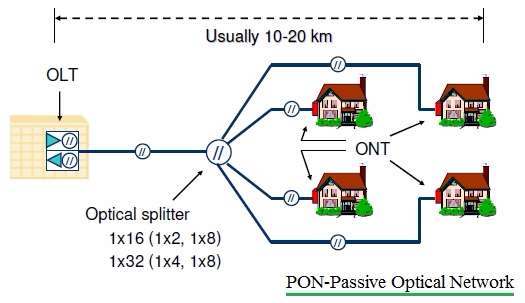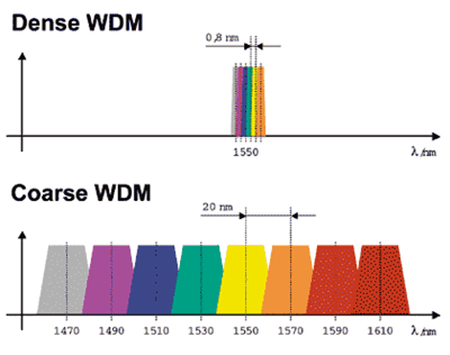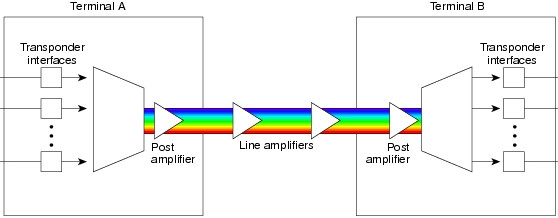AON (Active Optical Networks) and PON (Passive Optical Network) serve as the two main methods of building CWDM and DWDM backbone network. Each of them has their own merits and demerits. This article will compare them according to their different features and applications.
An active optical system uses electrically powered switching equipment, such as a router or a switch aggregator, to manage signal distribution and direction signals to specific customers. This switch directs the incoming and outgoing signals to the proper place by opening and closing in various ways. In such a system, a customer may have a dedicated fiber running to his or her house. The reliance of AON on Ethernet technology makes interoperability among vendors easy. Subscribers can select hardware that delivers an appropriate data transmission rate and scale up as their needs increase without having to restructure the network. However, AON require at least one switch aggregator for every 48 subscribes. Since it requires power, an active optical network inherently is less reliable than a passive optical network.
A PON is made up of an optical line termination (OLT) at the service provider’s central office and a number of optical network units (ONUs) near end users. Typically, up to 32 ONUs can be connected to an OLT. The passive optical network simply describes the fact that optical transmission has no power requirements or active electronic parts once the signal is going through the network.
A PON system makes it possible to share expensive components for FTTH. A PON splitter takes one input and splits it to broadcast to many users, which can lower the cost of the links substantially by sharing, for example, one expensive laser with up to 32 homes. PON splitters are bi-directional, that is signals can be sent downstream from the central office, broadcast to all users, and signals from the users can be sent upstream and combined into one fiber to communicate with the central office.

A passive optical network does not include electrically powered switching equipment. It uses optical splitters to separate and collect optical signals as they move through the network. A PON shares fiber optic strands for portions of the network. Powered equipment is required only at the source and receiving ends of the signal. PONs are efficient since each fiber optic strand can serve up to 32 users. Besides, PONs have a low building cost compared with active optical networks along with lower maintenance cost. However, PONs also have some demerits. They have less range than an AON, which means subscribes must be geographically closer to the central source of the data. When a failure occurs, it is rather difficult to isolate it in a PONs. Moreover, because the bandwidth in a PON is not dedicated to individual subscribers, data transmission speed may slow down during peak usage times in an effect known as latency. And latency would quickly degrade services such as audio and video, which need a smooth rate to maintain quality.
As early as the year 2009, PONs began appearing in corporate networks. Users were adopting these networks because they were cheaper, faster, lower in power consumption, easier to provision for voice, data and video, and easier to manage, since they were originally designed to connect millions of homes for telephone, Internet and TV services.
Passive Optical Networks (PON) provide high-speed, high-bandwidth and secure voice, video and data service delivery over a combined fiber network. The main benefits of PON are listed below:
- Lower network operational costs
- Elimination of Ethernet switches in the network
- Elimination of recurring costs associated with a fabric of Ethernet switches in the network
- Lower installation (CapEx) costs for a new or upgraded network (min 200 users)
- Lower network energy (OpEx) costs
- Less network infrastructure
- You can reclaim wiring closet (IDF) real estate
- Large bundles of copper cable are replaced with small single mode optical fiber cable
- PON provides increased distance between data center and desktop (>20 kilometers)
- Network maintenance is easier and less expensive
- Fiber is more secured than copper. It is harder to tap. There is no available sniffer port on a passive optical splitter. Data is encrypted between the OLT and the ONT.
To sum up, the PON network’s predefined topology makes individual changes more difficult. By terminating all the fiber optics at the OLT, i.e. the same fiber optic topology as in the AON (point-to-point), this disadvantage can be overcome. Therefore, for future-proof infrastructure investment, reliable point-to-point fiber optics technology should always be considered.














